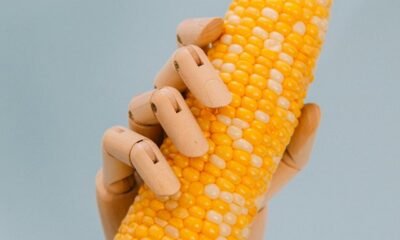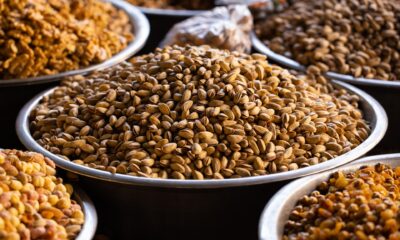Nutrition
5 Benefits of Dark Chocolate – Facts You Need to Know Before Enjoying
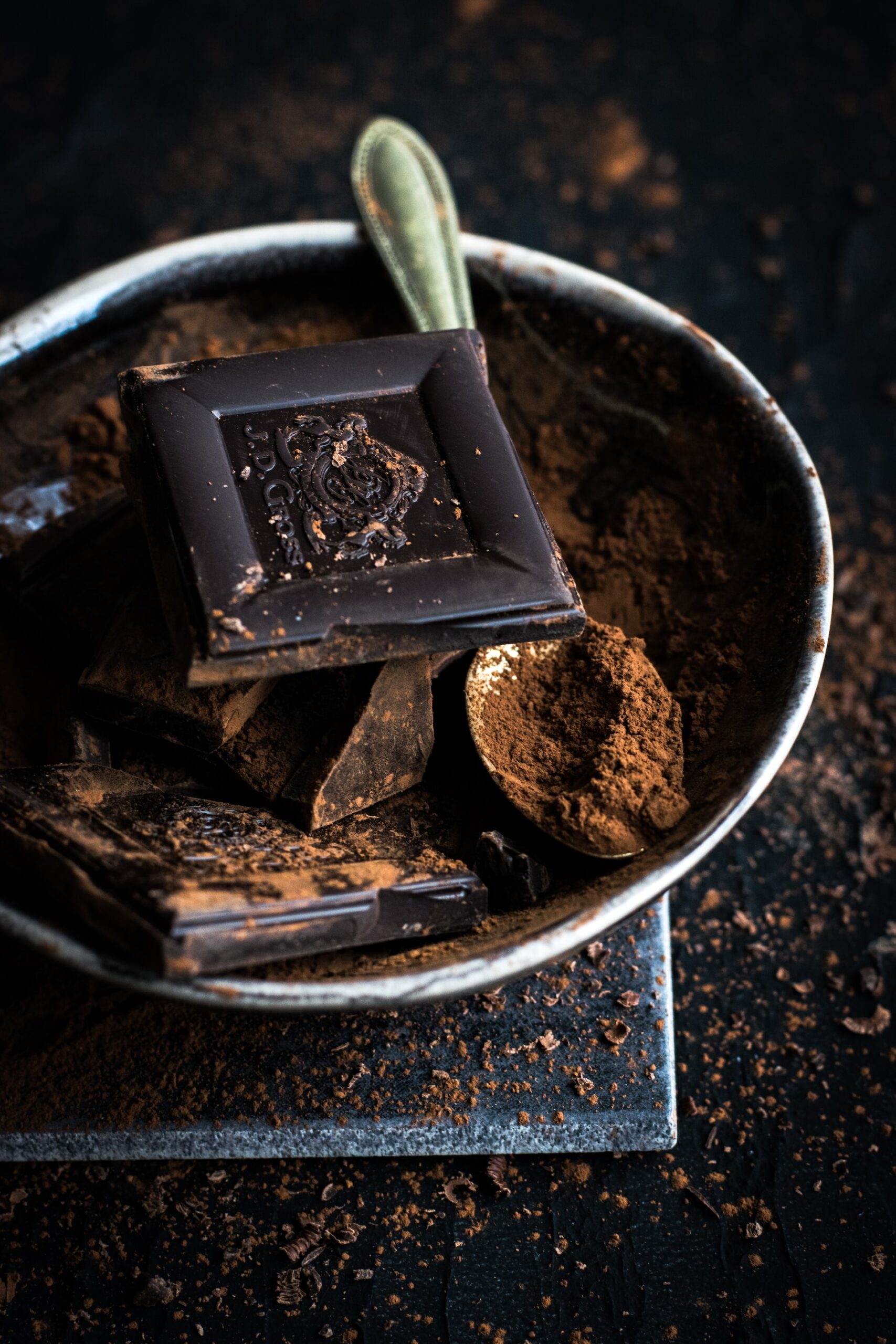
Benefits of dark chocolate… Yes, the legends are true: They do exist!
But, before you go rummaging through year-old Halloween candy and stuffing your face with dark chocolates, Snicker’s and Tootsie Roll’s, there’s a few things you need to know.
First, and most importantly, true dark chocolate is usually considered anything at or above 65% Cacao.
You’re not going to find this percentage mixed in with the Skittles and Gummy Bears, and it does taste a bit different than the sugar-laden milk chocolate you’re probably used to, but most convenience and grocery stores do have a few high percentage options to at least take them for a test taste.
Don’t worry: Just like with wine, it’s an acquired taste for some, and your palette will adjust. I remember the first time I tried 65 percent, and I had to spit it out. I’ve since worked my way up the cocoa tree to being able to enjoy 80-85% thoroughly (I’m working on the 99, but that’s the extreme!).
The higher the percentage of cacao, the more benefits and better nutritional value the chocolate contains.
For example, an average 65% dark chocolate serving would look something like this (these are estimates, as actual numbers will vary, depending on brand, size, etc.): Total Fat 15 g, Sat. Fat 9 g, Sugars 16g, Protein 3g.
Comparatively, an average 99% dark chocolate serving would look something like this (these are estimates, as actual numbers will vary, depending on brand, size, etc.): Total Fat 22 g, Sat. Fat 14 g, Sugars 2g, Protein 5g.
As you can see, the higher up the percentage scale you go, the less sugar and more protein you’re going to get.
You may also notice the high fat content, but the majority of this comes from healthy fats (yes, there is such a thing!).
5 Benefits of Dark Chocolate
- Studies have shown dark chocolate to lower blood pressure
- Studies have also shown dark chocolate to lower bad cholesterol (LDL)
- It turns women on more than a passionate kissing session (no wonder they want it for Valentine’s Day!)
- Contains serotonin, a natural mood-boosting anti-depressant
- Stimulates pleasure-inducing endorphin production
Now, even though there are several benefits of dark chocolate, as with anything else, moderation is key. Make sure your chocolate delights fit into your daily caloric needs, and try to work your way up to the highest percentage dark chocolate you can enjoy.
Nutrition
Prime Energy Drink: Unleashing Your Productivity Beast!
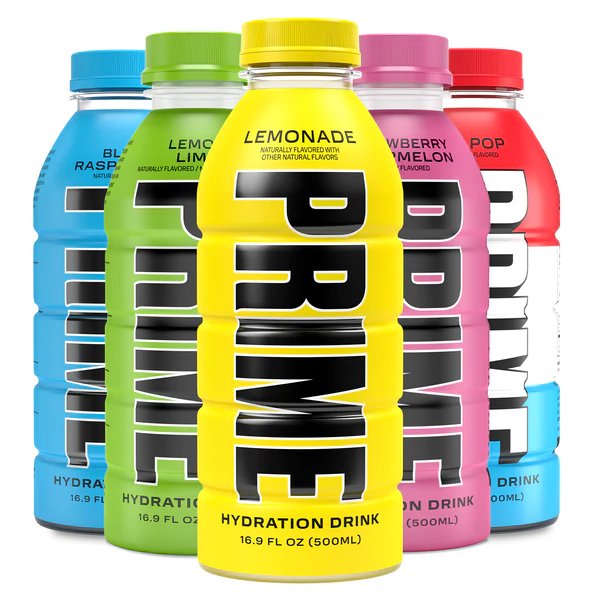
To the world of unstoppable energy and unwavering focus – welcome to Prime Energy Drink! If you’ve been searching for that extra boost to unleash your productivity beast, look no further. Prime Energy Drink is here to revolutionize the way you conquer your day and achieve your goals. Join us on a journey through the powerhouse ingredients, proven benefits, success stories, and more as we dive into why Prime is the ultimate choice for fueling your success. Get ready to ignite your passion for productivity like never before with Prime Energy Drink!
The Ingredients that Set Prime Apart
Prime Energy Drink stands out from the competition due to its carefully selected ingredients that are specifically chosen to fuel your productivity beast.
One key ingredient in Prime is Panax ginseng, known for its ability to enhance cognitive function and combat fatigue, giving you the mental clarity needed to tackle any challenge that comes your way.
Another standout component of Prime is L-theanine, which works synergistically with caffeine to provide a balanced and sustained energy boost without the crash often associated with other energy drinks.
Moreover, Prime contains B vitamins such as B6 and B12, essential for converting food into energy and supporting overall brain health. These vitamins play a crucial role in maintaining focus and alertness throughout the day.
Additionally, Prime Energy Drink includes natural fruit extracts like blueberry and pomegranate, packed with antioxidants that help fight off free radicals and support your immune system – because staying healthy is just as important as staying energized.
Scientifically Proven Benefits of Prime Energy Drink
Prime Energy Drink is not your average pick-me-up beverage. Packed with scientifically proven benefits, this powerhouse elixir is designed to supercharge your productivity and elevate your performance to new heights.
With a potent blend of ingredients like caffeine, B-vitamins, and amino acids, Prime Energy Drink works synergistically to enhance focus, alertness, and cognitive function. Studies have shown that these key components can improve mental clarity and boost energy levels without the crash associated with traditional energy drinks.
Moreover, Prime Energy Drink contains antioxidants that help combat oxidative stress in the body, promoting overall health and well-being. By supporting cellular function and reducing inflammation, this drink aids in optimizing physical endurance and recovery.
Whether you’re tackling a demanding workday or gearing up for an intense workout session at the gym, Prime Energy Drink has got your back. Embrace the science-backed benefits of Prime as you unleash your full potential and conquer every challenge that comes your way.
How to Incorporate Prime into Your Daily Routine for Maximum Productivity
Are you ready to unleash your productivity beast with Prime Energy Drink? Incorporating this powerhouse beverage into your daily routine can be a game-changer for your focus and energy levels. Start your day off right by swapping out that morning coffee for a refreshing can of Prime, packed with ingredients designed to fuel your brain and body.
Mid-morning slump hitting hard? Reach for another serving of Prime to power through those challenging tasks without skipping a beat. With its scientifically proven benefits, you’ll find yourself conquering deadlines and crushing goals like never before.
Keep the momentum going in the afternoon by sipping on some more Prime as a pick-me-up during those post-lunch hours when fatigue kicks in. By adding this energy drink to your daily regimen, you’ll feel unstoppable and ready to tackle any challenge that comes your way.
Success Stories from Prime Users
Unleashing the stories of Prime Energy Drink users reveals a tapestry of success and achievement. From entrepreneurs to athletes, students to professionals, Prime has become their go-to source of unwavering energy and focus.
One user shared how they crushed their work deadlines with laser-like concentration after incorporating Prime into their daily routine. Another mentioned how they powered through intense workouts with newfound vigor and stamina.
A student highlighted how Prime helped them stay sharp during long study sessions, resulting in improved grades and academic performance. A busy parent marveled at their increased productivity levels, allowing them to juggle multiple responsibilities effortlessly.
These real-life testimonials showcase the transformative impact that Prime Energy Drink can have on individuals striving for excellence in every aspect of life.
Comparing Prime with Other Energy Drinks on the Market
When it comes to energy drinks, Prime stands out from the competition. Unlike other brands loaded with artificial ingredients and excessive sugar, Prime Energy Drink offers a blend of natural components that provide sustained energy without the crash.
While some energy drinks rely on caffeine alone for a quick jolt, Prime combines caffeine with L-Theanine to enhance focus and alertness without the jittery feeling. This unique combination sets Prime apart as a smarter choice for those seeking productivity without sacrificing their health.
In comparison to other energy drinks on the market, Prime’s formula is scientifically backed to improve cognitive function and mental clarity. Users report increased concentration levels and improved performance in various tasks throughout their day.
For individuals looking for an energy drink that not only boosts productivity but also supports long-term well-being, Prime is undoubtedly a top contender in the market.
Prime Energy Drink: Fuel Your Day, Conquer Your Goals!
Looking for a way to supercharge your day and crush your goals? Look no further than Prime Energy Drink! This powerhouse beverage is specially formulated to give you the boost you need to take on whatever challenges come your way.
With a blend of premium ingredients, Prime Energy Drink packs a punch that will keep you energized and focused throughout the day. Say goodbye to mid-afternoon slumps and hello to sustained productivity!
Whether you’re tackling a busy workday or hitting the gym for an intense workout, Prime has got your back. Fuel up with Prime Energy Drink and feel yourself reaching new heights of performance.
Don’t just survive through your day – thrive with Prime by your side. Elevate your energy levels, sharpen your focus, and seize every opportunity that comes your way. Fuel up with Prime Energy Drink today and conquer those goals like never before!
Prime Energy Drink: The Secret Weapon of High Achievers!
High achievers know that success doesn’t come easy. It takes dedication, hard work, and sometimes a little extra boost to reach their goals. That’s where Prime Energy Drink comes in – it’s the secret weapon that fuels their drive and ambition.
With a carefully crafted blend of ingredients designed to enhance focus, increase energy levels, and improve mental clarity, Prime Energy Drink gives high achievers the edge they need to perform at their best. Whether they’re tackling a demanding project at work or training for a marathon, Prime helps them stay sharp and energized throughout the day.
What sets Prime apart is its scientifically proven formula that delivers real results. High achievers trust Prime because it works – plain and simple. By incorporating this powerhouse drink into their daily routine, they can power through tasks with ease and conquer challenges with confidence.
For those who strive for excellence in everything they do, Prime Energy Drink is not just a beverage – it’s an essential tool for unlocking peak performance. With Prime by their side, high achievers can push boundaries, shatter expectations, and elevate themselves to new heights of success.
Prime Energy Drink: Ignite Your Passion for Success!
Are you ready to ignite your passion for success with Prime Energy Drink? This powerhouse beverage is not just about boosting your energy levels; it’s about unlocking your full potential and fueling your drive to achieve greatness.
Imagine starting your day with a burst of motivation that propels you towards your goals with unwavering determination. Prime Energy Drink is the secret weapon that high achievers rely on to stay focused, driven, and unstoppable in their pursuit of success.
Whether you’re tackling a challenging project at work, pushing yourself during a workout session, or working on personal growth initiatives, Prime Energy Drink will be by your side every step of the way. It’s time to unleash the fire within you and take charge of your journey towards success.
With it as your ally, there are no limits to what you can accomplish. So go ahead, grab a can of Prime, channel that inner fire, and watch as it ignites your passion for achieving all that you desire. Success is within reach – let it power up your path towards greatness!
Prime Energy Drink: Powering Up Your Workouts Like Never Before!
Are you looking to take your workouts to the next level? Look no further than it! With its carefully selected ingredients, Prime is designed to power up your fitness routine like never before.
Imagine having the energy and focus to push through those last few reps or that final mile of your run. That’s where Prime comes in – providing you with the stamina and endurance needed for peak performance.
Whether you’re hitting the gym, going for a run, or engaging in any physical activity, Prime Energy Drink can give you that extra boost to crush your workout goals. Say goodbye to feeling tired and lethargic during exercise sessions.
Fueling your body with Prime before a workout can help increase your motivation and intensity, allowing you to make the most out of every sweat session. Experience enhanced performance and improved results with it by your side!
Prime Energy Drink: Boost Your Brainpower and Crush Challenges!
Are you ready to take on the day with laser-sharp focus and heightened mental clarity? Prime Energy Drink is here to help you boost your brainpower and crush challenges like never before.
With a carefully crafted blend of ingredients designed to support cognitive function and enhance mental performance, Prime gives you the edge you need to tackle even the toughest tasks with ease. Say goodbye to brain fog and hello to peak mental acuity.
Whether you’re facing a demanding work project, studying for exams, or looking to unleash your creativity, it is your secret weapon for unlocking your full potential. Feel sharper, more alert, and ready to take on whatever comes your way.
Don’t let fatigue or distractions hold you back from reaching your goals. Fuel your mind with it and experience a whole new level of productivity and success. It’s time to elevate your performance and conquer challenges with confidence.
Conclusion: Why Prime is the Ultimate Choice for Boosting Productivity
Imagine a world where your energy levels never dip, and your focus remains unwavering throughout the day. That’s the power of it – a game-changer for those striving to reach their peak productivity. With its carefully selected ingredients and proven benefits, Prime stands out as the ultimate choice for boosting performance and achieving your goals.
By incorporating Prime into your daily routine, you’re not just getting a quick jolt of energy; you’re fueling your body and mind with sustainable vitality that lasts. Say goodbye to midday slumps and hello to sustained motivation and drive.
Success stories from Prime users speak volumes about the transformative impact this drink can have on one’s productivity levels. Whether it’s conquering deadlines at work or crushing personal milestones, Prime is there every step of the way, empowering individuals to unleash their full potential.
Make it your secret weapon in the pursuit of success, harnessing its unparalleled ability to ignite passion, boost brainpower, and elevate performance in all aspects of life. Join the ranks of high achievers who have unlocked their true potential with Prime – because when it comes to productivity, there’s simply no substitute for excellence.
FAQs
Q: Is Prime Energy Drink suitable for all ages?
A: Prime Energy Drink is recommended for adults looking to boost their productivity and focus during work or workouts. It is not intended for children or individuals sensitive to caffeine.
Q: Can I mix Prime Energy Drink with other beverages?
A: While it’s best consumed on its own for optimal effectiveness, you can experiment with mixing Prime with water or your favorite juice to suit your taste preferences.
Q: How long does the energy boost from Prime last?
A: The effects of it typically last between 4-6 hours, providing sustained energy without jitters or crashes.
Prime Energy Drink offers a unique blend of ingredients designed to unleash your full potential and maximize productivity. By incorporating this powerhouse beverage into your daily routine, you can fuel your day, conquer your goals, and ignite your passion for success like never before. Join the ranks of high achievers who have harnessed the power of it to crush challenges and reach new heights in both work and fitness. Choose Prime as your ultimate partner in boosting productivity and watch as you soar towards achieving greatness!
FOR FURTHER INFORMATION VISIT:http://fitbuff.com
Nutrition
Sous Vide Tri Tip: The Foolproof Method for Delicious Results Every Time

Picture this: a succulent cut of tri tip steak, perfectly cooked to tender, juicy perfection every time. How is this culinary magic achieved, you ask? The answer lies in the art of sous vide cooking. In this blog post, we will dive into the world of sous vide tri tip and uncover the secrets to creating a melt-in-your-mouth dining experience that will have your taste buds dancing with delight. So grab your apron and get ready to elevate your steak game to new heights!
What is Sous Vide Cooking?
Sous vide cooking, a culinary technique that has taken the food world by storm, involves sealing food in airtight bags and cooking it in a temperature-controlled water bath. The term “sous vide” is French for “under vacuum,” highlighting the method’s focus on precise temperature control.
By cooking at lower temperatures for extended periods, sous vide allows for even doneness from edge to edge, resulting in tender and flavorful meats. This gentle cooking process helps retain moisture and juices while enhancing the natural flavors of the ingredients.
One of the key advantages of sous vide is its consistency – you can achieve perfectly cooked results every time with minimal effort. Whether you’re a novice home cook or a seasoned chef, sous vide offers unparalleled precision and control over your dishes.
From delicate seafood to hearty cuts of meat like tri tip steak, sous vide cooking opens up a world of possibilities for elevating your culinary creations. Get ready to embark on a flavorful journey unlike any other with this innovative cooking method!
The Benefits of Cooking Tri Tip with Sous Vide
Sous Vide cooking offers a myriad of benefits when it comes to preparing tri tip. One key advantage is the precise temperature control that ensures your meat is cooked perfectly from edge to edge. With sous vide, there’s no risk of overcooking or undercooking – just juicy, tender results every time.
Another perk of using the sous vide method for tri tip is the ability to infuse flavors deeply into the meat. By vacuum-sealing your seasoned tri tip before cooking it in a water bath, you lock in all those delicious aromas and tastes that will permeate throughout the entire cut.
Additionally, sous vide cooking allows for convenience and flexibility in meal preparation. You can simply set your desired temperature, walk away, and return to a perfectly cooked tri tip whenever you’re ready to finish it off with a quick sear on the grill or skillet.
Moreover, cooking tri tip with sous vide also guarantees consistent results every single time you prepare this cut of meat. Whether you’re feeding a crowd or just making dinner for two, sous vide takes out the guesswork and delivers exceptional outcomes without fail.
Step-by-Step Guide to Preparing Sous Vide Tri Tip
To start preparing your sous vide tri tip, begin by seasoning the meat generously with salt and pepper. This will enhance the flavors as it cooks in the water bath. Next, place the seasoned tri tip into a vacuum-sealed bag or a resealable freezer bag, removing as much air as possible to ensure even cooking.
Preheat your sous vide precision cooker to the desired temperature for your preferred level of doneness. For medium-rare tri tip, aim for around 130°F (54°C). Once the water has reached the set temperature, carefully submerge the sealed tri tip into the water bath.
Allow it to cook slowly and evenly for several hours – typically around 2-4 hours depending on thickness. This low and slow method guarantees tender and juicy results every time. When ready, remove the cooked tri tip from the bag and pat dry before finishing with a quick sear on a hot grill or skillet for that perfect caramelized crust.
Serve sliced against the grain for maximum tenderness and enjoy this succulent sous vide tri tip masterpiece!
Seasoning and Flavor Options for Tri Tip
When it comes to seasoning and flavoring your tri tip for sous vide cooking, the options are endless. One classic choice is a simple yet flavorful blend of salt, pepper, garlic powder, and smoked paprika. This combination adds depth and richness to the meat without overpowering its natural taste.
For those looking to get adventurous with their flavors, consider marinating the tri tip in a mixture of soy sauce, honey, ginger, and sesame oil before placing it in the sous vide bath. This Asian-inspired marinade will infuse the meat with sweet and savory notes that complement its juicy texture perfectly.
If you prefer a more traditional approach, a mix of fresh herbs like rosemary, thyme, and oregano can elevate the tri tip’s taste profile. Just sprinkle them generously over the meat before vacuum-sealing it for cooking.
Experiment with different seasonings and flavor profiles to find your perfect match for sous vide tri tip – there’s no limit to creativity when it comes to enhancing this delicious cut of beef!
Tips for Achieving Perfect Results with Sous Vide Tri Tip
Achieving perfect results when cooking sous vide tri tip can be a game-changer in your culinary skills. To ensure success, start by selecting a high-quality cut of tri-tip with good marbling for maximum flavor and tenderness. Next, season the meat generously with your favorite herbs and spices before vacuum-sealing it.
When it comes to cooking time and temperature, precision is key. Set your sous vide machine to the recommended temperature (usually around 130-135°F) and allow the tri-tip to cook slowly for several hours to achieve that melt-in-your-mouth texture.
After the cooking process is complete, remove it from the water bath and pat it dry before searing it on a hot skillet or grill for a crispy outer crust. Letting the meat rest for a few minutes before slicing will help retain its juices and flavors.
Experimenting with different seasoning blends or marinades can also elevate the taste profile of your sous vide tri tip. Don’t be afraid to get creative and try out new flavor combinations to suit your preferences!
Serving Suggestions and Recipes for Sous Vide Tri Tip
When it comes to serving sous vide tri tip, the possibilities are endless. You can slice it thinly against the grain and serve it with a chimichurri sauce for a burst of fresh flavor. Or you can pair it with roasted vegetables and mashed potatoes for a hearty meal that will satisfy any appetite.
For a more elevated presentation, try topping your sous vide tri tip with caramelized onions and blue cheese crumbles. This combination of savory and tangy flavors is sure to impress your guests. If you’re feeling adventurous, why not use leftover tri to make delicious tacos or sandwiches? The tender meat will add a whole new level of taste to these classic dishes.
No matter how you choose to serve your sous vide tip, one thing is certain – its juiciness and tenderness will elevate any meal to gourmet status. So get creative in the kitchen and explore all the ways you can enjoy this mouthwatering cut of meat!
Sous Vide Tri Tip: The Art of Juiciness and Flavor Fusion
Imagine a culinary masterpiece where tenderness meets taste in perfect harmony. That’s the magic of sous vide tri tip – a symphony of juiciness and flavor fusion that elevates your cooking game to new heights.
By sealing in a vacuum-sealed bag and immersing it in a precisely controlled water bath, you’re ensuring that every fiber of the meat is infused with deliciousness. This method locks in moisture while allowing the flavors to meld together effortlessly.
The slow, low-temperature cooking process guarantees tender perfection from edge to edge, leaving no room for dry or overcooked disappointments. With sous vide, you’re not just cooking; you’re crafting an experience for your palate that transcends ordinary steak dinners.
Embrace the artistry of sous vide tip and savor every succulent bite as the juices burst with unparalleled richness. It’s more than just a meal; it’s a sensory journey through texture, taste, and sheer culinary delight.</p>
Sous Vide Tri Tip: Mastering the Melt-in-Your-Mouth Experience
Picture this: a beautifully marbled, perfectly cooked to tender perfection, so juicy and flavorful that each bite melts in your mouth like butter. That’s the magic of sous vide cooking.
By immersing in a precisely controlled water bath for an extended period, you’re ensuring that every inch of the meat is cooked evenly from edge to edge. This results in a consistently tender texture that is simply unparalleled.
The low and slow cooking method of sous vide allows the natural juices and flavors to be locked in, creating a sensory experience like no other. You’ll savor every bite as the rich beefy essence dances on your taste buds.
Whether you prefer a classic seasoning blend or want to experiment with bold marinades, sous vide tip offers endless opportunities for flavor exploration. Pair it with your favorite side dishes or slice it up for sandwiches – the options are as limitless as your culinary imagination.
Elevate your dining experience with sous vide tri and indulge in a melt-in-your-mouth sensation that will leave you craving more.
Redefining Grilled Steak Excellence
Imagine a juicy, perfectly cooked tip steak that melts in your mouth with every bite. Sous vide cooking takes this classic grilled favorite to a whole new level of excellence. By sealing the seasoned meat in an airtight bag and immersing it in a precisely controlled water bath, you achieve unparalleled tenderness and flavor infusion.
The sous vide method ensures that every inch is evenly cooked to your desired doneness. This results in a steak with consistent texture from edge to edge, unlike traditional grilling methods where it’s easy to end up with unevenly cooked spots.
With sous vide, you have the flexibility to experiment with different seasonings and marinades for your tri tip. Whether you prefer a simple salt and pepper rub or a more complex blend of herbs and spices, the sealed environment of sous vide locks in all those flavors for an unforgettable dining experience.
Next time you’re craving grilled steak perfection, consider redefining excellence with sous vide tri tip. Your taste buds will thank you for the tender juiciness and flavor explosion that only this cooking technique can deliver.
Conclusion: Why Sous Vide Tri Tip is the Ultimate Choice for Tender and Juicy Meat
Tip is a game-changer in the world of cooking. It’s not just about making a meal; it’s about creating an experience that tantalizes the taste buds and leaves you craving more. The tender and juicy meat that results from this cooking method is nothing short of culinary magic.
By immersing in a precisely controlled water bath, sous vide ensures that every fiber of the meat is cooked to perfection. This slow, low-temperature process locks in all the flavors and juices, resulting in a mouthwatering dish that will have your guests coming back for seconds.
The beauty of sous vide lies in its consistency. No more worrying about overcooking or undercooking – with this method, you can achieve flawless results every single time. Whether you prefer your steak rare, medium-rare, or well-done, sous vide has got you covered.
Say goodbye to tough and dry meat – with sous vide, tenderness and juiciness are guaranteed. Elevate your culinary skills and impress your friends and family with this foolproof cooking technique that promises nothing but deliciousness on every plate.
FAQs
Q: Can I overcook tri tip using the sous vide method?
A: One of the benefits of sous vide cooking is that it’s difficult to overcook meat, so as long as you follow the recommended time and temperature guidelines, your tri tip should come out perfectly tender every time.
Q: How do I know when my sous vide tri tip is done?
A: Since sous vide cooking ensures precise temperatures, using a digital thermometer to check for doneness is always a good idea. For medium-rare tri-tip, aim for an internal temperature of around 130°F (54°C).
Q: Is it necessary to sear the tri-tip after sous vide cooking?
A: While not mandatory, giving your sous vide-cooked tri tip a quick sear in a hot skillet or on a grill can enhance flavor and create a beautiful crust on the outside.
By following these FAQs and tips provided in this article, you’ll be well on your way to mastering the art of it and impressing your family and friends with deliciously juicy and flavorful steak every time. Happy cooking!
Nutrition
Peanut Nutrition – What You Need to Know
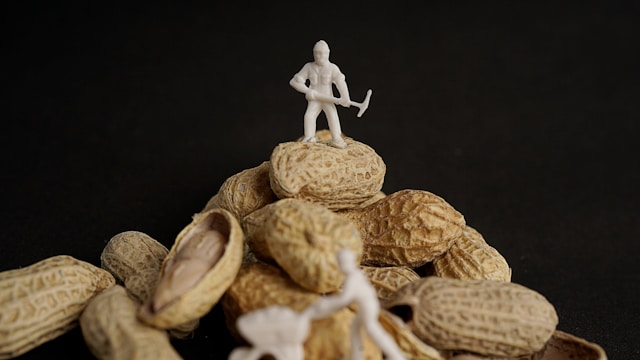
The world of nutritional health is surprising, to say the least. Ever so often we come across health articles that speak of a food’s benefits that we could hardly conceive of as a link between the two.
It’s true.
While water, milk, vegetables and fruits as well as lean meats are associated with better health, the one that surprised me the most was the benefits linked with peanuts.
The verdict on peanut nutrition is out, and it looks more than good…
Peanuts – Are They Any Good?
Yes, peanuts are good for you as they contain almost thirty essential nutrients. This can only mean one thing: these little beans will boost your health, no matter how you eat them.
Some of these nutrients include large amounts of protein as well as others such as folate, manganese, tryptophan, copper, Vitamin B2 and B3 – all tied with some benefits or the other.
So, while the matter on how beneficial peanuts are when it comes to the nutrients it has is settled, the next obvious question is whether or not consuming peanuts amounts to too many calories.
One hundred grams of peanuts amounts to 500 calories or so but don’t worry, most of this energy is dissipated, thanks to the fact that most people don’t chew nuts all that well. This is why a study found that heart health can be improved by eating peanuts while not gaining weight in the process.
But its uses isn’t limited to salted peanuts, peanut butter or being in candy form but also extends to industrial uses such as an ingredient for paint, cosmetics and soaps too.
Thanks to its nutritional value, peanuts are also used along with flour as paste to feed malnourished children and adults… and it has worked wonders so far.
Peanut Nutrition – What You Need to Know
So there’s no doubt that the answer to the question, is eating peanuts healthy is a proper ‘yes’.
But how might one ask?
As mentioned earlier, there are a number of health benefits associated with peanuts but the ones that really get your attention is the way it keeps you heart healthy since cardiovascular disease is the number one reason for deaths in the United States.
But that’s not all, they’re also known to lower the risk of breast cancer as well and even if they’re full of calories, they don’t add up to much since they are “very filling”.
Apart from lowering cholesterol levels and improving blood circulation while also being a proper brain food in boosting memory. But that’s not all – eating peanuts prevents gallstones, promotes fertility, fights depression and age-related cognitive decline.
The only documented pitfall is in eating raw peanuts, thanks to the presence of fungi, aflatoxins and Cyclopiazonic acid.
But apart from that, and once you roast raw peanuts, we’re good to go…
In Closing
So, what are your thoughts about peanut nutrition? Feel free to share them in the comments section below.
Also, here is an article that tells you all you need to know about natural peanut butter.
-

 Entertainment5 months ago
Entertainment5 months agoYoungTube 101: Tapping the Youthful Side of Online Video
-

 Pet1 year ago
Pet1 year agoDog Training Tips: Throw me a bone, will you?
-

 Fitness8 months ago
Fitness8 months agoThe Allure of Sports T-Shirts: A Blend of Style and Team Spirit:
-

 Entertainment1 year ago
Entertainment1 year ago4 Reasons Why She Doesn’t Call You Back
-
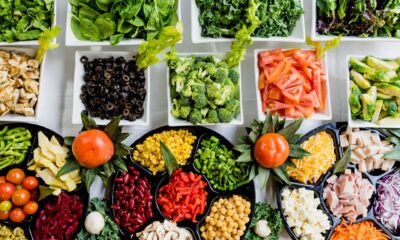
 Health1 year ago
Health1 year agoWhat Is Healthy?
-

 Fitness1 year ago
Fitness1 year agoTotal Mind and Body Fitness Blog Carnival 165
-

 Fitness1 year ago
Fitness1 year agoTotal Mind and Body Fitness Blog Carnival 141
-

 Fitness1 year ago
Fitness1 year agoTotal Mind and Body Fitness Blog Carnival 155

